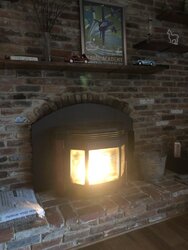Hello everyone,
My new home conveyed a 1991 Austroflamm Integra. I have completely cleaned the unit, made my own gasket for the combustion blower, and I am experiencing a major slowdown in the combustion blower. Can someone direct me to the location of the air sensor? I’m being told to clean it with compressed air. Anyone have experience with this? I do not have compressed air at home. Thanks in advance.
My new home conveyed a 1991 Austroflamm Integra. I have completely cleaned the unit, made my own gasket for the combustion blower, and I am experiencing a major slowdown in the combustion blower. Can someone direct me to the location of the air sensor? I’m being told to clean it with compressed air. Anyone have experience with this? I do not have compressed air at home. Thanks in advance.
Last edited:


